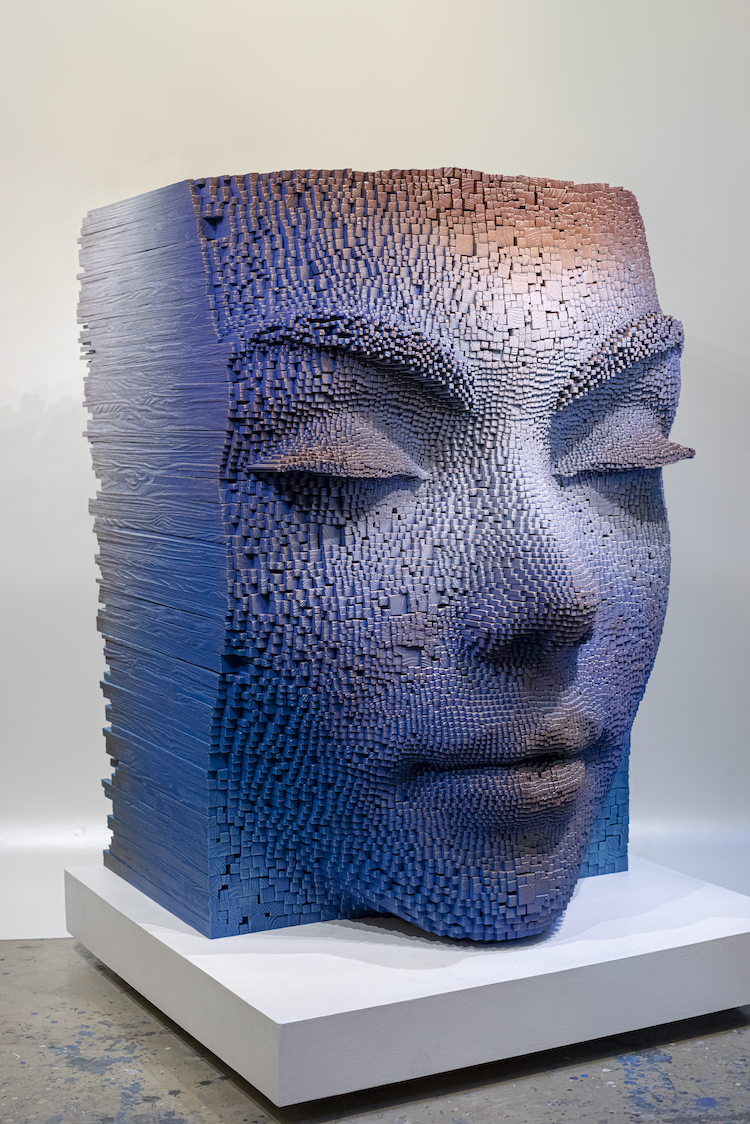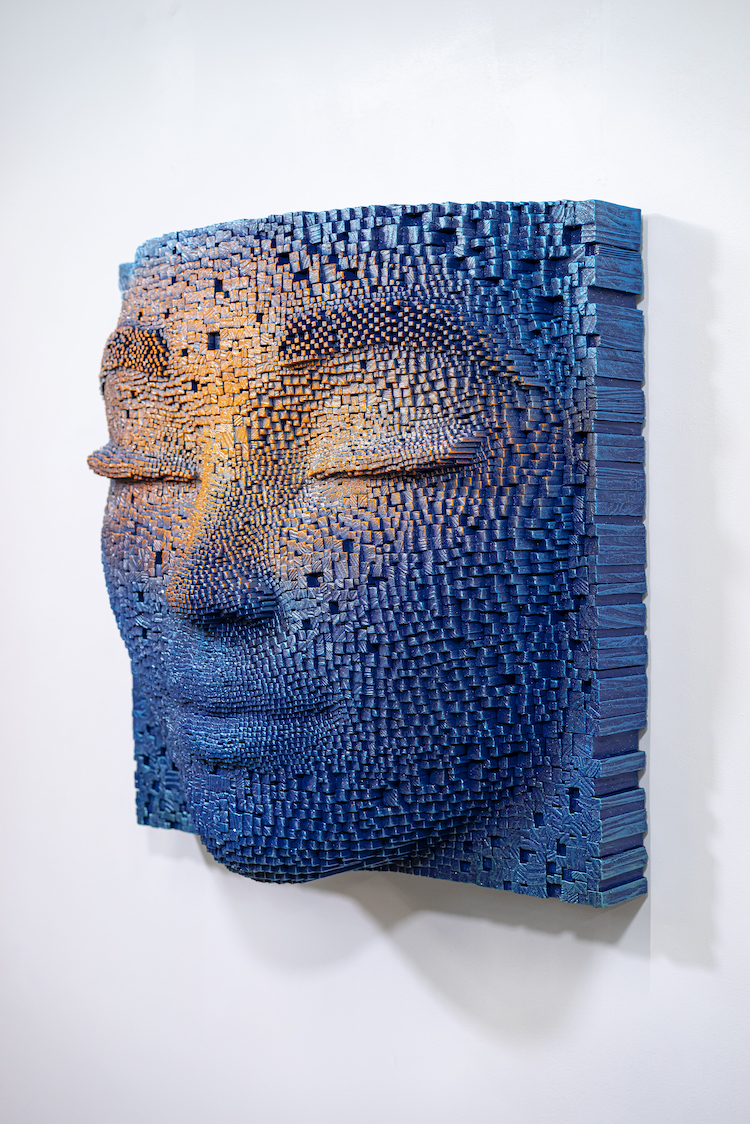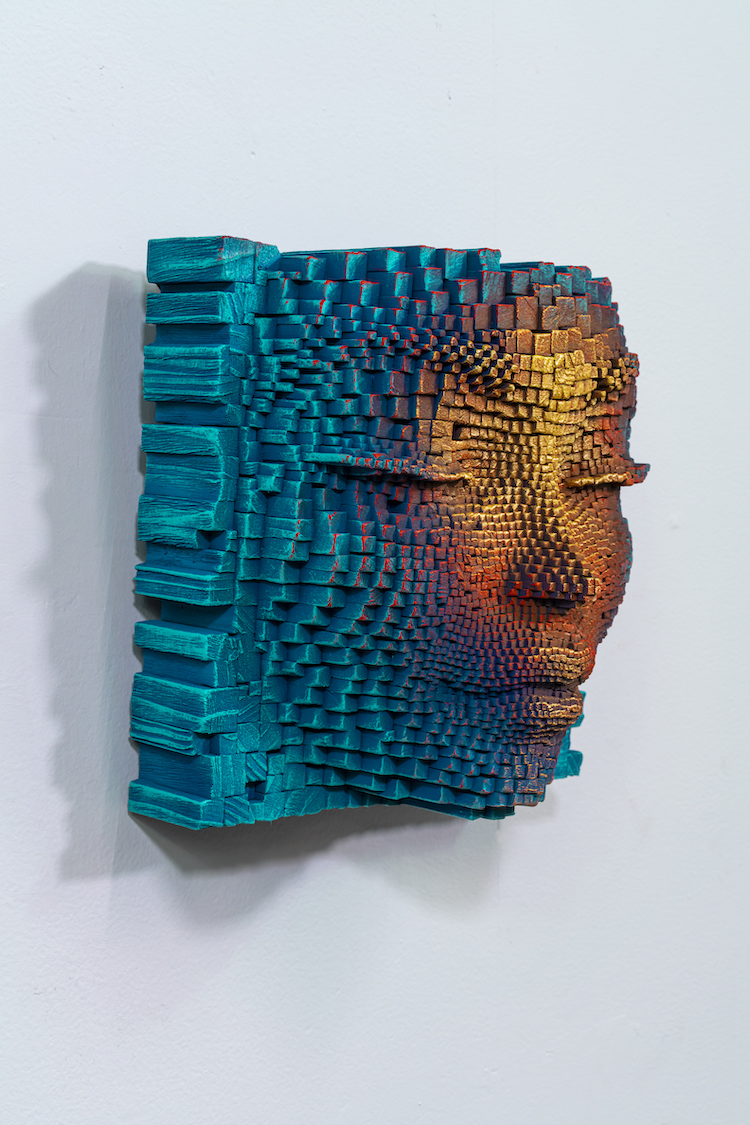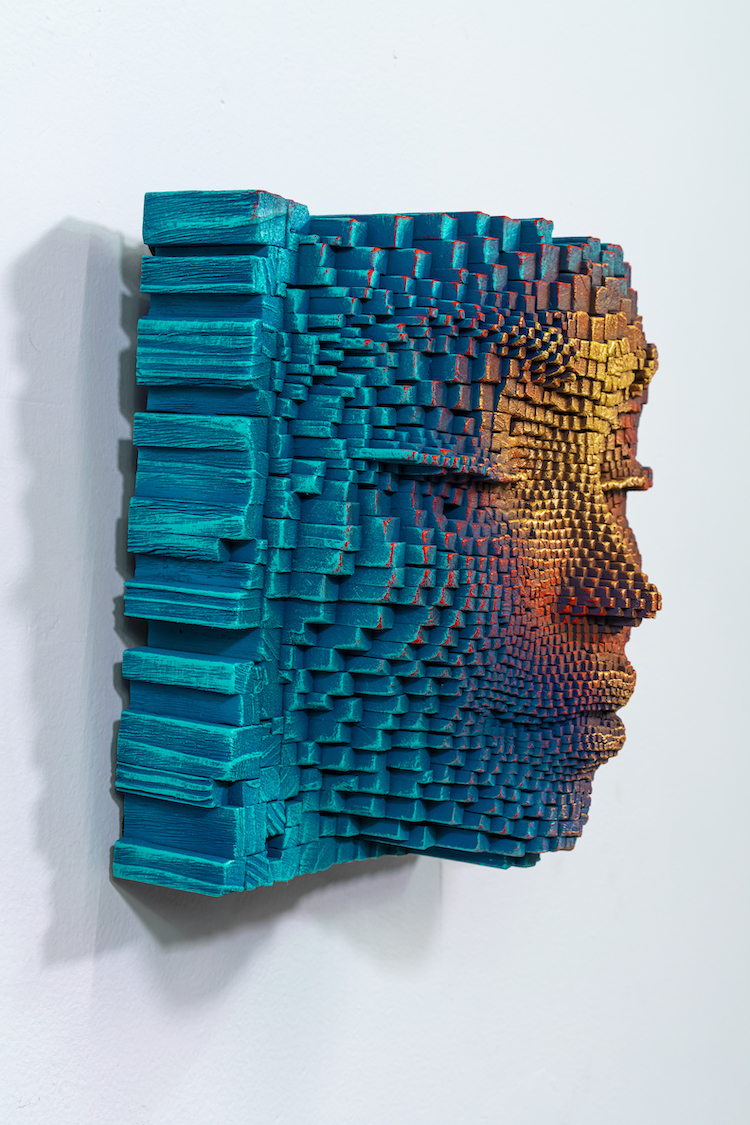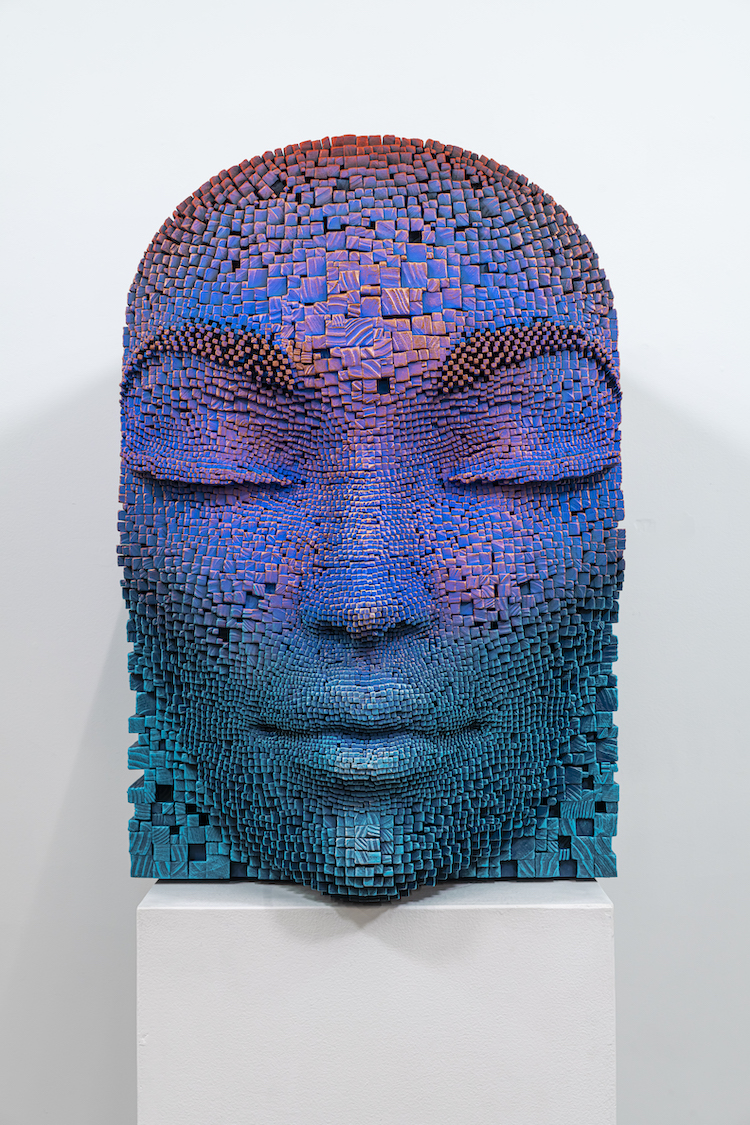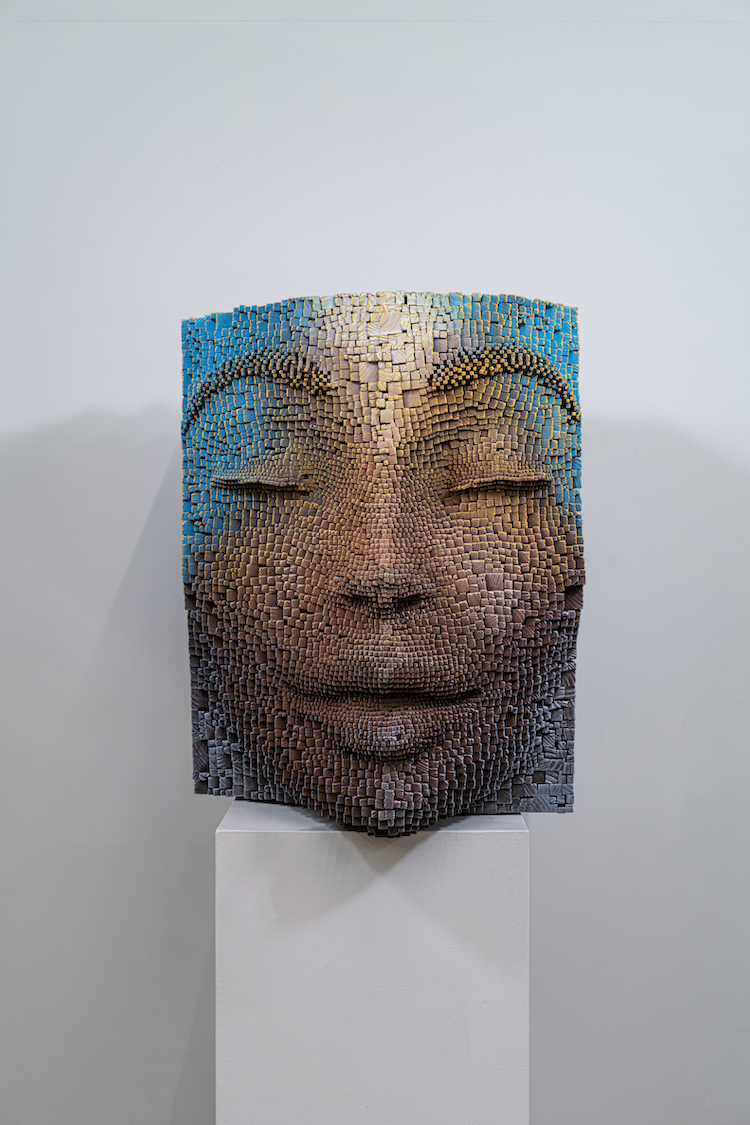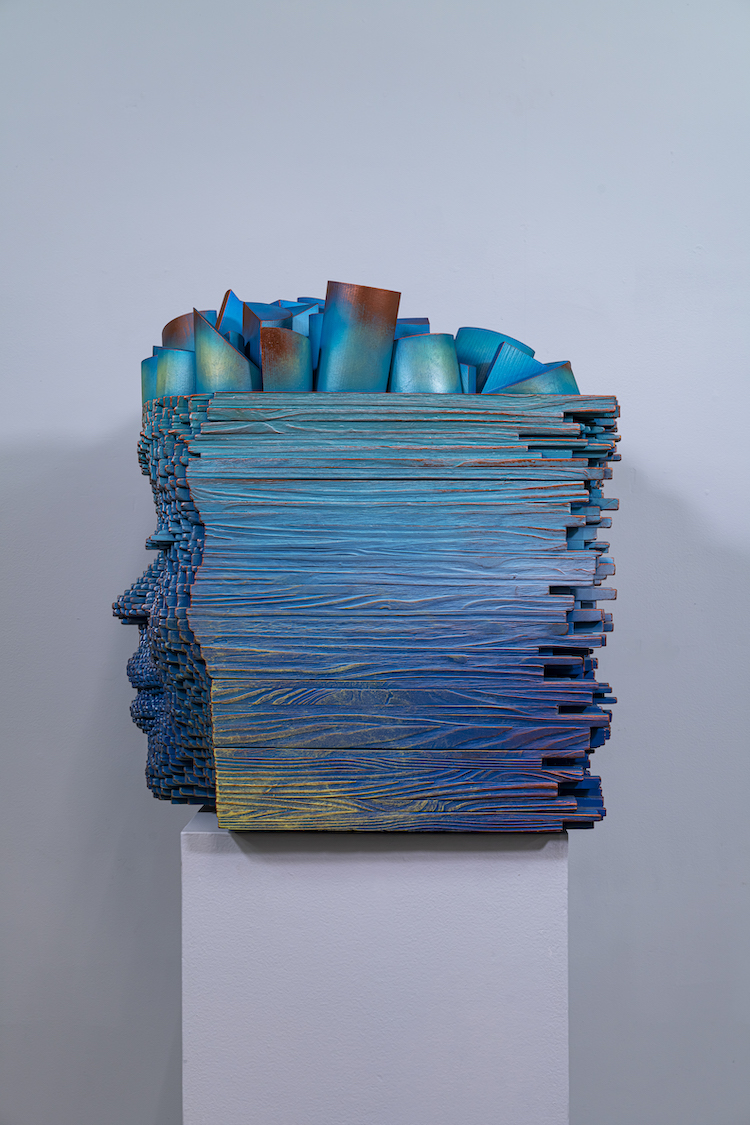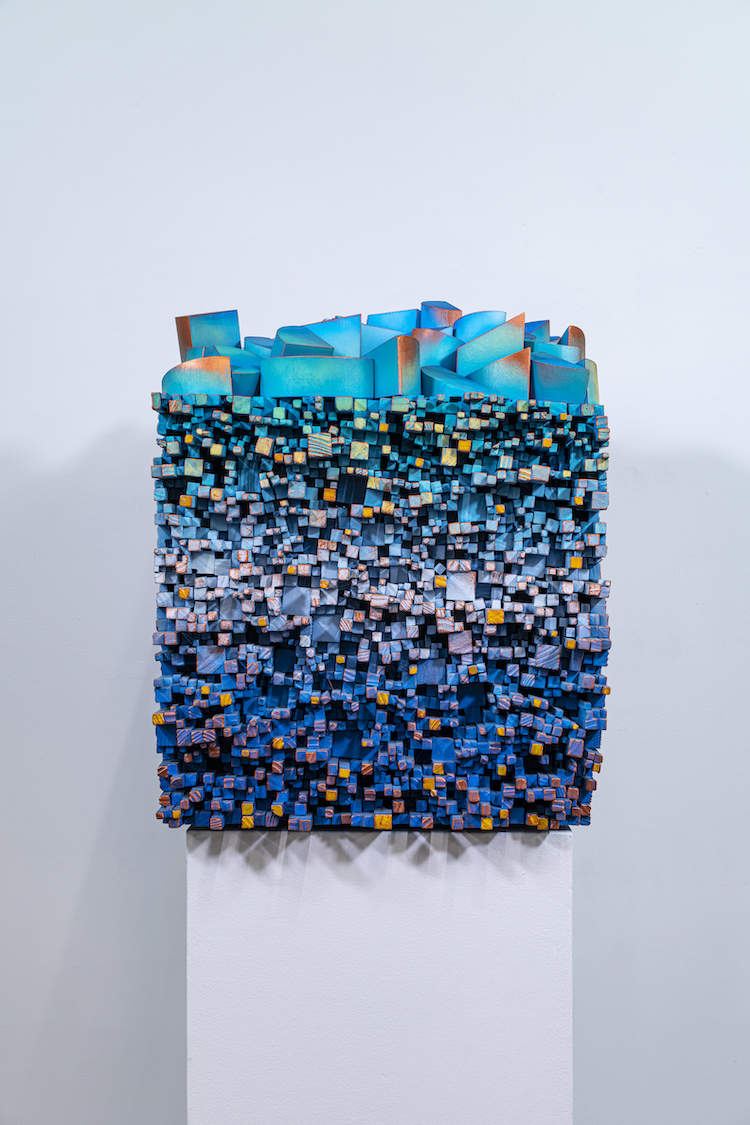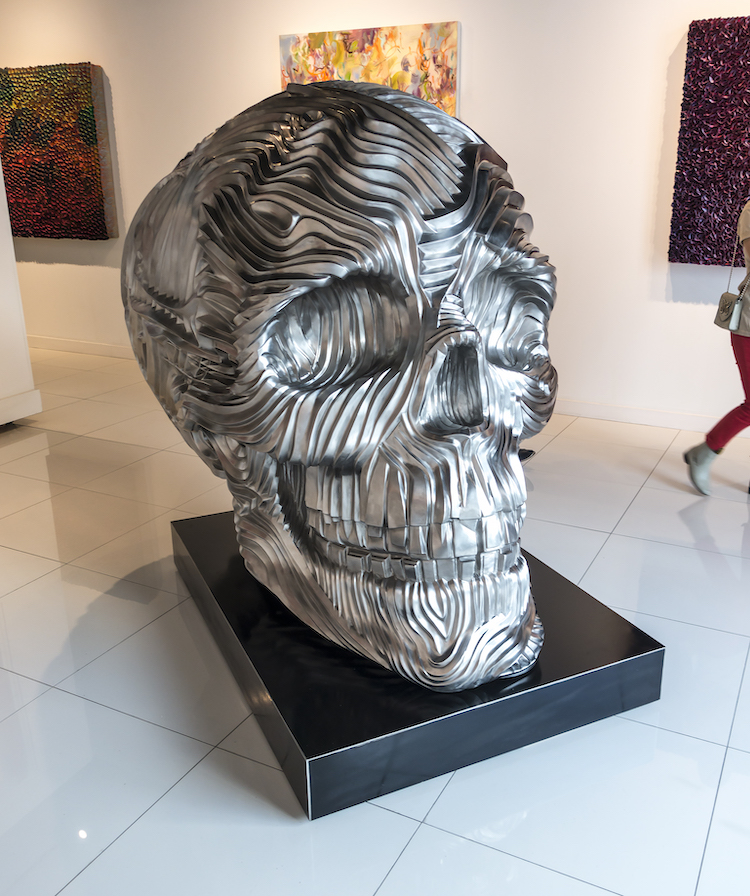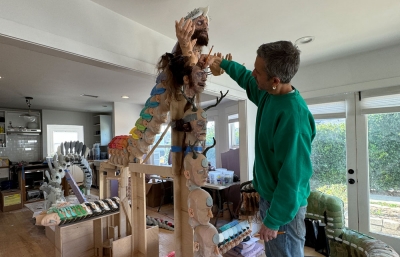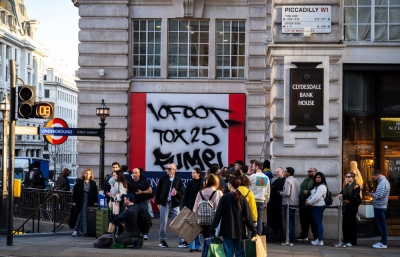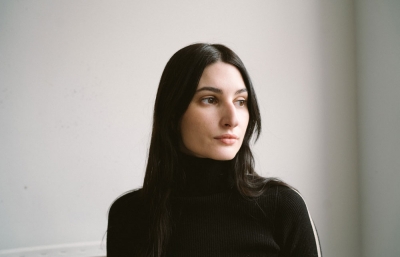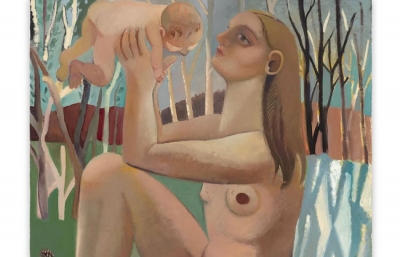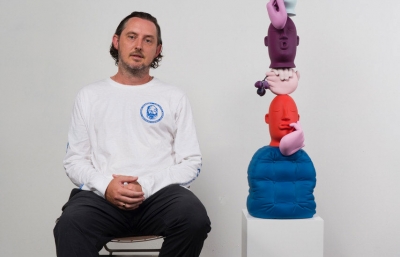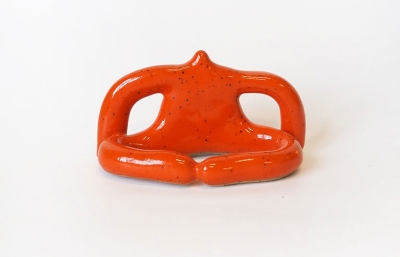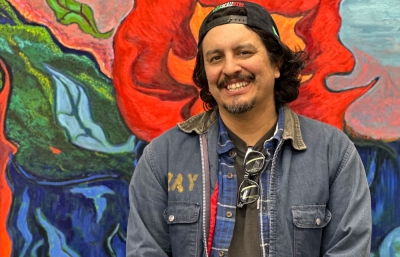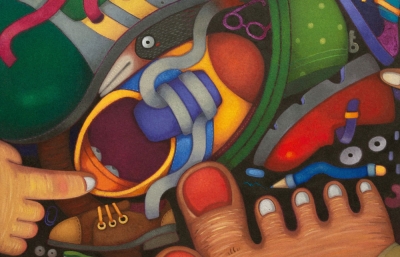Gil Bruvel is a surrealist craftsman, he makes fantasies by hand. Tinkering in his father’s cabinet-making business, and later in their family restoration workshop, might have logically taken Bruvel into the realm of interior design, but he has managed to carve out a unique space for himself in the firmament of fine art. Grounded in craft making, he has gathered perspective from his birthplace of Australia and childhood in France, currently honing skills in his studio in the wide open spaces of Texas. For Bruvel, work means constantly channeling dichotomies and exploring different realities and possibilities. Perhaps his dive into surrealism is the result of the kaleidoscope of places and moods he has absorbed from each landscape and its natural treasures.
On the occasion of the recent sale of his monumental stainless steel sculpture, The Descent, a part of Bruvel’s ongoing Flow series, we decided to go back in time with the artist to speak about drawing, meditation, and his magnum opus. So far, at least.
Evan Pricco: Do you remember realizing when you wanted to be an artist? Was it in your childhood?
Gil Bruvel: I wanted to be an artist at nine after my cabinet maker dad taught me sculpting at the age of six. Since then, I have been constantly drawing. At the age of twelve, for my birthday, I asked my mom for a set of oil paints and started to study oil painting. At the age of fourteen, I entered a restoration workshop and had formal training to learn about restoring artwork from the 12th to the 20th century. This included restoring sculptures in addition to a three-and-a-half-year program that included learning art history in depth.
What was the first piece of art you ever sold?
Two years after entering the restoration workshop it became necessary to become autonomous financially, and with a friend from the workshop, we put together a show to sell artwork we were creating after hours and on weekends. This is when I started to sell my own artwork at the age of sixteen, mostly oil paintings on canvas.
When was the last time you were moved by a piece of art, and how did that feel?
Being moved by a piece of art has been my artistic motivation since an early age. As a kid, my mom would take me to art galleries and museums in the south of France, the region where I grew up. Being exposed to a large array of artwork from different periods and styles only increased my desire to be an artist. It was not only the artwork of Picasso, Matisse, and Max Ernst that made a strong impression on my young psyche, but also classics spanning the different centuries. While training at the restoration workshop, we would visit different art institutions and galleries across Europe, and for me at that time, Salvador Dali and Francis Bacon had a big inspirational impact. One of the multiple reasons these artists had such an impression was that I could see and understand how to express myself without any restrictions on my very active imagination.
What part of the art-making process is your favorite?
Growing up in a wood workshop with easy access to all kinds of materials and tools made it an ideal playground to understand how to put things together. Even though I would lean at the beginning toward sculpting, I also was very much attracted to drawing and painting. Ever since I have been oscillating between these two ways of making artwork with the multitude of variations and materials that can be combined with two-and three-dimensional artwork. Ultimately, it is the creative process itself that is my favorite.
What is the best piece of advice you have ever received that informs your artmaking?
My restoration teacher explained to me that making multiple iterations or sheer attempts at an idea or concept should not be interpreted as failure but as part of the creative process. The advice was to never be discouraged by it. He even used it as a measuring tool toward progress. Taking on ideas and concepts outside of my comfort zone was necessary for my evolution as an artist.
When you are in a creative rut, what is something you do to break out of it?
Meditation has been a go-to for boosting a creative mindset. The goal of meditation is to expand our capacity to experience moments of full presence. Throughout this practice, exploring the different layers of states of mind induced by meditation can be an endless source of ideas and feelings to keep pushing the creative boundaries.
Having lived in Australia, France, and now, America, what have you learned from each place?
For France, it’s the easy access to an incredible amount of artwork, culture, ideas, styles, and a very long tradition of experimentation in the creative domain. In America, this exists as well, but additionally, I came to the realization I could create my own market without necessarily belonging to an art movement or an “ism,” meaning my own personal expression could find its own public.
Do you consider something like Descent to be your magnum opus to date?
The Descent piece is part of the Flow series which evokes the flow of emotion and sensation of life force energy that holds us together and sometimes pulls us apart in expressing the human need for beauty and reflection. It was also an attempt to find a balance between deeply researched and highly crafted technical forms with accessible invitations into deeper meaning.
If you were to invite three artists to dinner, who would they be?
Michelangelo, Francis Bacon, Pablo Atchugarry and so many others, but what would be cool is to have dinner with a major architect from Egyptian antiquity like Imhotep. I’ve always pondered the significance of artists and architects whose influences were from a society infused and bound by mythologies created to give meaning to the day-to-day life of a population, as well as a major propaganda machine for the rulers. In this regard, I assume artists and architects were forming the collective unconscious of the population. Ironically, we now view these ancient beliefs as pure mythologies.
After all these years, how do you most want to be remembered as an artist?
I am not sure of the necessity to be remembered as an artist but maybe to remember the pearls discovered along the way of these continuous explorations in the creative fields.
https://www.bruvel.com // This interview was originally published in our Winter 2023 Quarterly

